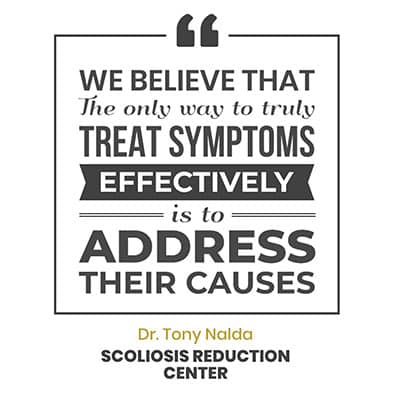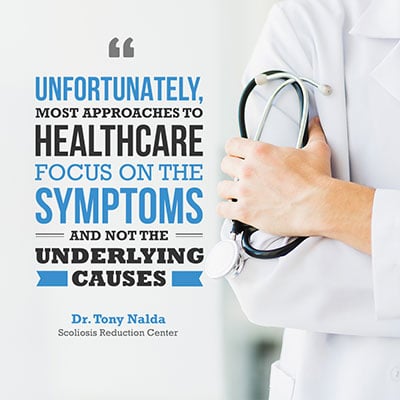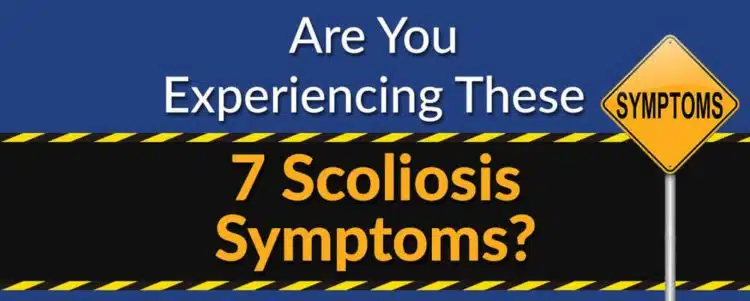Introduction: What is Scoliosis?
Scoliosis is a medical condition characterized by an abnormal curvature of the spine. While the spine naturally has gentle curves, scoliosis causes it to curve too much, forming an “S” or “C” shape. This abnormal spinal curvature can occur in any part of the spine, including the cervical (neck), thoracic (middle), and lumbar (lower) regions. Scoliosis affects people of all ages, from infants to adults, and can be caused by various factors such as genetics, muscle imbalances, and spinal deformities.
Understanding the Types of Scoliosis
There are several types of scoliosis, each with distinct characteristics and causes:
- Idiopathic Scoliosis: This is the most common type, accounting for about 80-85% of cases. The term “idiopathic” means that the exact cause is unknown, though it often appears during adolescence.
- Congenital Scoliosis: Present at birth, this type results from a genetic mutation or an issue during fetal development, leading to spinal deformities.
- Neuromuscular Scoliosis: This type is associated with neurological or muscular conditions such as cerebral palsy or muscular dystrophy, which affect the muscles and nerves that support the spine.
- Degenerative Scoliosis: Typically occurring in adults, this type is caused by degenerative changes in the spine, such as those from osteoporosis or spinal stenosis.
Risk Factors and Signs of Scoliosis
Certain factors can increase the risk of developing scoliosis, including:
- Family History: A family history of scoliosis can increase the likelihood of developing the condition.
- Age: Scoliosis is more commonly diagnosed during adolescence, a period of rapid growth.
- Sex: Girls are more likely to develop scoliosis than boys.
- Underlying Medical Conditions: Conditions like cerebral palsy and muscular dystrophy can contribute to the development of scoliosis.
Signs that may indicate scoliosis include:
- A visible curvature of the spine
- Uneven shoulders, hips, or waistlines
- Back pain or fatigue
- Difficulty breathing or swallowing
Scoliosis symptoms can be obvious and not-so obvious, which is why so many people live with the condition but go undiagnosed for such a long time. The fact is that people don’t always know what to look for.
If you are concerned that you or someone you care about may have scoliosis, here are seven scoliosis symptoms you should be aware of:
#1 — Changes in Posture or Body Symmetry
If you are concerned that your teenager or young child may have scoliosis, this is the symptom that will appear most evident. Scoliosis can affect different parts of the spine, including the thoracic spine, leading to visible asymmetry. When an individual is affected by scoliosis, the appearance of the back, shoulders and hips may be asymmetrical or off center. Certainly, it is normal for a teenager to appear awkward during this stage of life — we are all familiar with the classic “adolescent slouch” — but there are some key indicators that you can look for:
- Clothing hanging unevenly on the body
- One arm may seem to be longer than the other
- One hip may appear higher than the other
- One leg may appear longer than the other
- Ribs or shoulder blades may stick out more prominently on one side of the body than the other
- Arms held closely to the sides instead of swinging naturally back and forth
#2 — Impairments in Lung Function

Pulmonary function, which is a measure of how well the lungs perform, can be impacted negatively by scoliosis. The greater the curvature of the spine, the greater the impact on the lungs’ ability to move air. The impact is most notable during exercise or other physical activity, but may be present during times of rest, as well.
#3 — Neck, Back, Head or Leg Pain
Because scoliosis affects the spine, it can have a negative impact on the body’s nervous system, leading to pain and discomfort. Chronic, persistent pain in the neck, back or legs may be caused by scoliosis. Muscle tension and frequent headaches may also be associated with scoliosis
#4 — Trouble Sleeping
Scoliosis can cause a chain reaction: the excess curvature of the spine can lead to pain and impairment in lung function, which, in turn can impact one’s ability to get a good night’s sleep. Scoliosis affecting the thoracic spine can lead to discomfort and trouble sleeping.
#5 — Digestion Issues
It may be a difficult and odd concept to grasp, but scoliosis symptoms can include problems with digestion. Again, the spine is connected in some way to virtually every other body system, and curvature can affect the digestive tract just as much as it affects the muscles more closely connected to the spine. This can lead to difficulty with digestion and an inability to experience proper bowel function.
#6 — Irregular Menstrual Cycles
The nerves that run through the spine connect the brain with all other organs, which is why sleep, digestion and overall comfort are affected by scoliosis. Even menstrual cycles can become disrupted due to the condition and its impact on the body.
#7 — Balance and Equilibrium Issues
Most people are adept at maintaining bodily balance with their eyes closed, and they are able to easily recognize their body position. The ability of the body to recognize its own position in the absence of visual cues is known as proprioception, and it is affected adversely by scoliosis, as is the ability to balance and maintain equilibrium. Balance and coordination can suffer as a result of scoliosis.
While most people are able to stand on one leg with their eyes closed for 30 seconds or more, people with scoliosis find this task quite difficult. An inability to do so does not necessarily mean that you have scoliosis, but it is a symptom that should be explored and evaluated.
Complications of Untreated Scoliosis
If left untreated, scoliosis can lead to several complications, including:
- Respiratory Problems: Severe spinal curvature can compress the lungs, leading to breathing difficulties.
- Back Pain: Chronic back pain and fatigue are common in individuals with scoliosis.
- Difficulty Walking: Severe scoliosis can impair mobility, making walking or standing challenging.
- Increased Risk of Osteoporosis and Fractures: Scoliosis can heighten the risk of osteoporosis and fractures, especially in older adults.
- Reduced Lung Function: Severe cases can significantly reduce lung function, impacting overall health and quality of life.
Scoliosis Treatment: Addressing the Root Cause, Not Just the Symptoms

The symptoms I discussed above can be treated on their own, which may or may not lead to any lasting, significant relief. You can take aspirin for a headache or muscle pain, for example, but if your pain and discomfort is caused by scoliosis, no amount of any kind of pain reliever will address the root cause. Unfortunately, most approaches to healthcare in our society focus on the symptoms and not the underlying causes. This is why so many people suffer endlessly with chronic pain, discomfort and an inability to participate in life to the extent that they would like.
Here at the Scoliosis Reduction Center®, we believe that the only way to truly treat symptoms effectively is to address their causes. That is why we take such a comprehensive, proactive approach. And the results speak for themselves — most of our patients experience relief in a matter of just a couple weeks if they follow our procedures and do their homework!
Are you experiencing one or more of the symptoms mentioned here? Are you concerned that a scoliosis diagnosis may require you to cope with these symptoms for the rest of your life? We want to help! By addressing the causes of these symptoms, it’s possible to improve your spine’s strength and functionality considerably. Want to learn more? Give our team a call at 321-939-2328 or email us at [email protected] to start the conversation.





